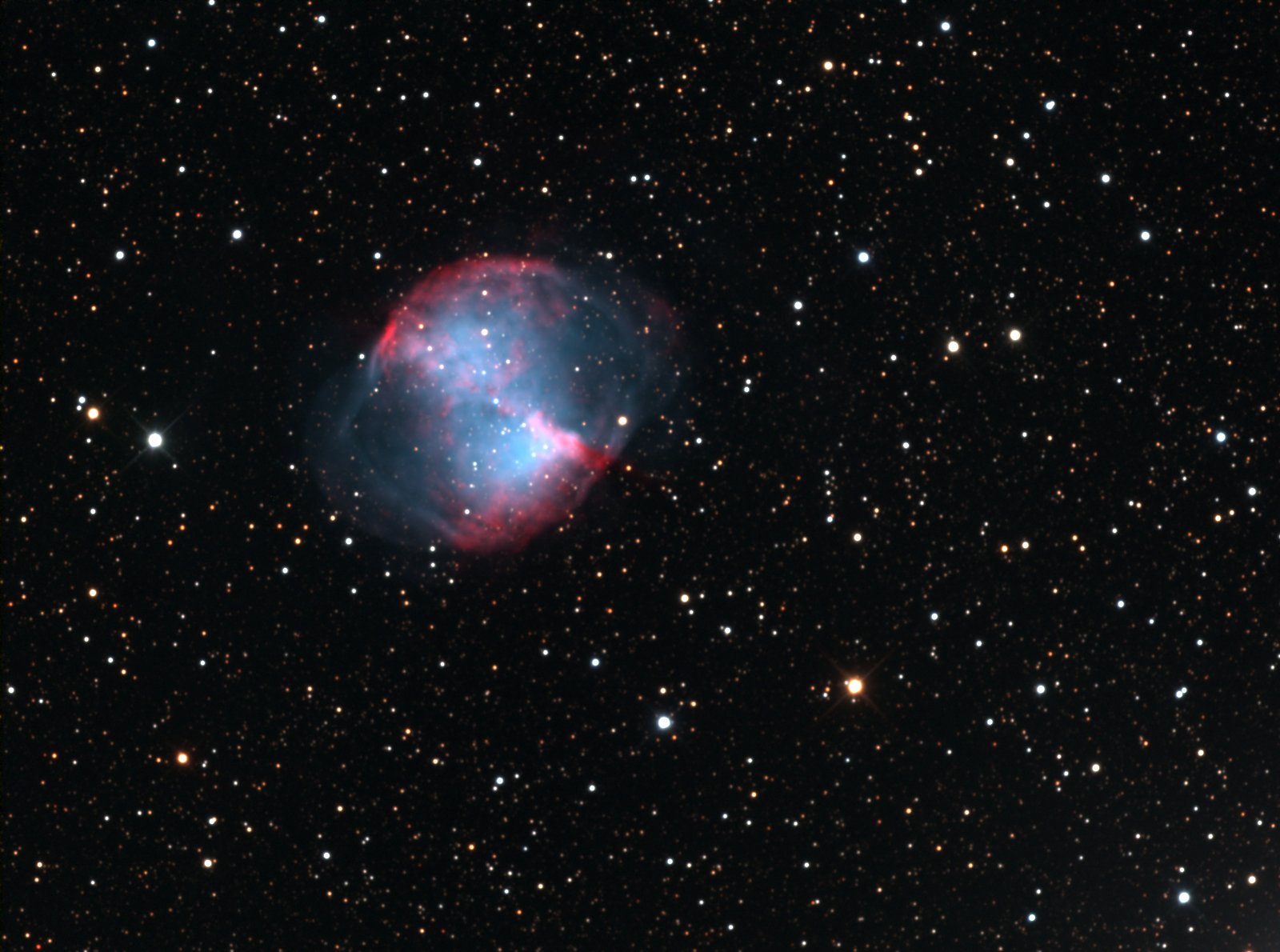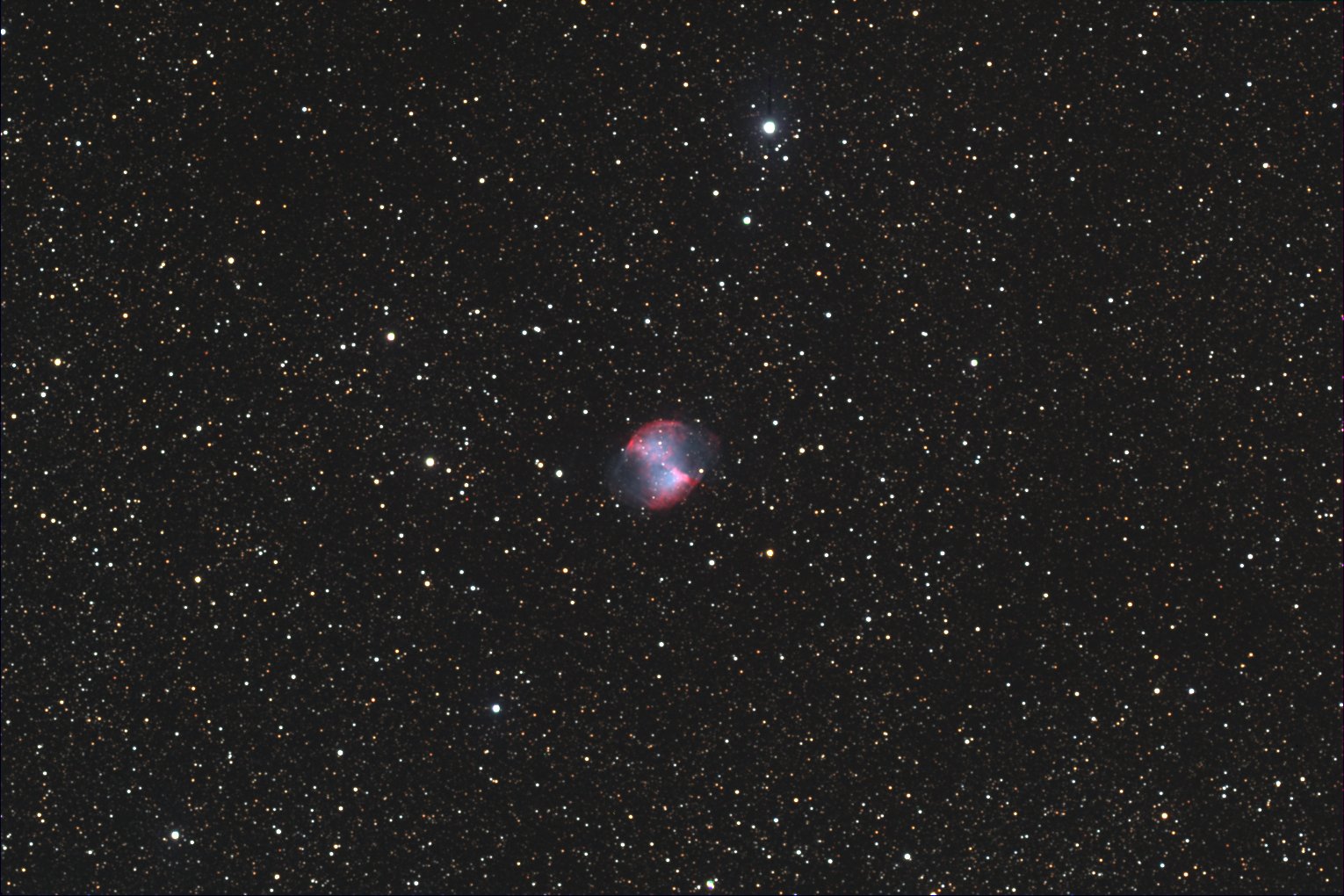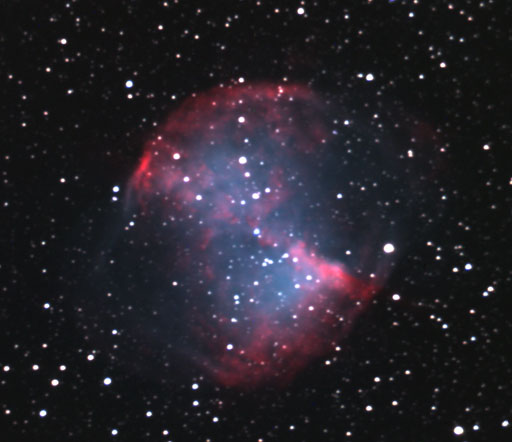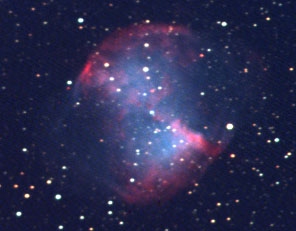|
M27 - The Dumbbell Nebula |
(Home) |
![]()
The remains of a star that reached its end of life. When a sunlike star runs out of fuel, it balloons up and throws off its atmosphere. The core shrinks to a white dwarf. Also known as NGC 6853, this irregular planetary nebula is found in constellation Vulpecula (The Little Fox with the Goose). It has a magnitude of 8.1, and size of 15.2 arc-minutes. It is 1,250 light years away.
The intent of this shot was to go as high resolution as possible, and to show the wispy blue areas to the side. This meant using the RC 10 inch and the adaptive optics, and taking a bunch of exposures.

This shot is a composite of 20 each of R, G, B frames, all at 200 seconds exposure for a total of 3 hours and 20 minutes. The STT-8300 camera was used.
Processing included "by the numbers" color calibration all done with scripts for MaxIm. A final gamma stretch was done to bring up the wispy areas.
Taken on July 21, 2020 at my home in Monmouth. No Oregon Star Party this year due to Covid-19.
This shot was taken on August 31, 2011 at the 2011 Oregon Star Party. The intent of this shot was to do a wide field shot showing M27 in as much surrounding space as possible. So, I used the Takahashi FSQ 106N which has a relatively short focal ration of f/5.0.

This shot is a composite of four 5 minute red, three 5 minute green, and seven 5 minute blue frames for a total of 1 hour and 10 minutes exposure. All frames were unbinned with the ST-8E camera.
The AO7 adaptive optics unit was used to rapid guide.
Processing included "by the numbers" color calibration (1.15 : 1.00 : 2.05 native ratios at 68° elevation gives 1.15 : 1.01 : 2.07).
This older shot was taken on July 28, 2000 at my home in Monmouth. Trying to get the color right.

This shot is a composite of five 10 minute luminance, one 10 minute red, one 10 minute green, and two 10 minute blue frames. All frames were unbinned at f/10 with the 12" LX200 and ST-8E.
The AO7 adaptive optics unit was used to rapid guide on a magnitude 10.3 star just north of the field. Some frames were at 0.1 sec, some at 0.2 sec, and some at 2 sec. (I was experimenting.)
Processing included "by the numbers" color calibration (1.15 : 1.00 : 2.05 native ratios at 68° elevation gives 1.15 : 1.01 : 2.07).
Taken on July 28, 2000 at my home in Monmouth.
This previous shot, taken a year earlier, was from the first run in which I attempted color:
 Built from 4 minute exposures for each
of red green and blue. Taken at f/6.3 with the 12" LX200 and
416XT through the Meade 616 filter wheel. Autoguided with a 201XT through
a 90mm ETX.
Built from 4 minute exposures for each
of red green and blue. Taken at f/6.3 with the 12" LX200 and
416XT through the Meade 616 filter wheel. Autoguided with a 201XT through
a 90mm ETX.
Color balance was achieved by examining a G2 star. However, the blue frame has a low signal to noise ratio by about 3X over the other frames since my CCD is less sensitive to blue. I should have used a longer exposure for blue. When the blue frame was scaled up to set the color balance the noise was scaled up also. This seems to give the sky background a blue cast.
Taken at ARGO on July 10, 1999.
The image below was taken Aug 28 1997 at the Oregon Star Party
A 1 minute exposure taken with the 200 and Meade 416XT at f/3.3.
![]()